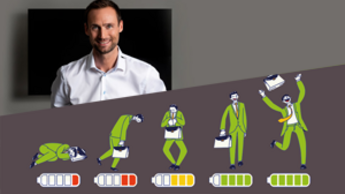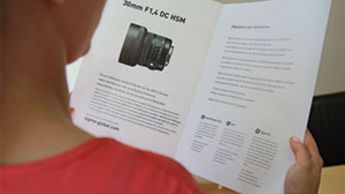1. Writing comprehensible texts
Comprehensible texts are easier to translate. It does not matter whether it has been translated by a human or a machine. In practice, translators often have to read texts several times in order to understand their meaning and be able to translate them. You have to ask the client questions in order to understand the meaning of terms, synonyms, unclear instructions, etc. that are used inconsistently. This is the only way you can deliver a good translation. Processing queries costs time and money for companies. Failure to reply to queries runs the risk that the content of translations may be incorrect, or may not correspond to the company’s corporate wording. In both cases, time-consuming rounds of corrections become necessary, which extend the translation process and increase costs.
One of the reasons for the poor translatability is that texts are often written by different people. They are often "casual editors" or "editors against their will", as they actually have other functions in the company. They usually lack the knowledge about what is important when writing translation-friendly texts. It can also happen that the authors of texts assume that each reader or translator is familiar with the topics, products and language of the company. This results in long and complicated sentences with superfluous filler words, unknown abbreviations, synonyms, unclear references, several calls to action per sentence, etc.
The number of queries from translators and feedback from country offices is an indication of how understandable their source texts are. But be careful: The absence of feedback can also be due to the fact that there is no feedback process ;-)
Savings potential: medium to high
Method: writing rules, style guides for source texts, sensitization and training of editors, proofreading
Effort: medium to high
2. Using consistent terminology
The use of terminology preferred by the company or corporate wording is a frequent reason for translation complaints. The client often assumes that the translator's lack of specialist knowledge is the reason for this. The resulting rounds of feedback and corrections mean additional work and delays in translation.
If you look at the source texts, however, you will often find that different people who write texts in the same company (editors, product managers, developers, marketing staff, etc.) also use different terminology for one and the same concept.
safety relay vs. safety-relay vs. safety switchgear
A company's employees may all understand the same concept, but the translator wonders whether these words really imply different concepts, for which they must find different translation solutions in the given language. It must be clear to all people involved: good terminology management in translation is no substitute for consistent terminology in the source text. It only helps, after a lot of effort, to gloss over the deficits in the source text. When asked about the meaning or differences in meaning by the client, the translator often receives contradictory or unclear answers. In most cases, the translator's contact person cannot answer terminology questions and must first forward these to the responsible employee until an answer can be provided.
Inconsistent use of terms not only occurs among different people or divisions of a company. Sometimes, even within the same text, different terms are used for the same concept or subject. Further aspects in connection with terminology are the comprehensibility (decodability) of terms, different spellings and cost optimization. For example the translation of "touchscreen" costs exactly half of the translation of "touch screen".
Savings potential: medium to high
Method: systematic terminology work, terminology checking, proofreading
Effort: medium to high
3. Checking text lengths and shortening texts
We will continue right here: Translations are paid according to the volume of text. Text volume is usually measured in words, lines or pages. The number is then multiplied by the respective word, line or page price, and the number of target languages. The price may vary depending on the target language. So we can conclude: The longer the source texts, the more expensive the translation. Short, understandable sentences and texts are not only easier to translate, they also cost less. Here is an example from the field of technical documentation:
“You must loosen the screw." vs. "Loosen the screw." 4 vs. 2 words.
This means a savings potential of 50% in the translation. With an average word price of EUR 0.12 and 30 languages, this is a saving of EUR 7.20 for one sentence. In the case of a translation with proofreading and editing, 30% would be added per work step. Without optimization, projects or products with high documentation requirements will make you lose a lot of money.
Check the source texts for length! Texts can be reformulated and shortened in many places. Instead of long sentences you can use enumerations for example. Fill words like "but, however, still, hence" can often be deleted.
Also consider the need for translating certain passages in your translation project: Your service provider will be pleased and will do the job skillfully. Was it really necessary to translate the vacancy notice for the office clerk training position into 11 languages – just because the company was in the process of relaunching its website?
One more thing: Plan text quantities! How long should a blog post, website news article or press release be if your company communicates in 30 languages and wants to publish a text each month?
Savings potential: high
Method: Internationalization test, style guides for source texts, training of editors, proofreading
Effort: medium to high
4. Marking non-translatable texts
Many documents contain non-translatable content. These differ depending on the type of document.
Product names & proper names
In most cases, product names and proper names should not be translated. However, the translator often does not recognize them or does not know whether to translate or adapt them. Product names and proper names can be marked with special formatting or marking to label these texts as non-translatable for the translator, so you do not have to pay for them as translatable text. Texts marked in this way can then automatically be protected by translation tools so they cannot be edited by the translator.
Placeholders, variables and codes
Placeholders, variables and codes (HTML, XML, JavaScript, etc.) are typical for software texts.
%1, $2, ERROR_TYPE , <script> etc.
These expressions may not be changed in the translation. By default, however, these are editable in translation tools. If placeholders or variables are changed during translation, this can lead to malfunctions in the software. Depending on the size of the software and the size of the texts, these errors are difficult to find afterwards. However, if you provide the translator with a list of placeholders, variables and codes, or describe the underlying text patterns, the translator can set up his or her translation tool so that the expressions are protected and not taken into account in the price calculation. In addition, translation tools can automatically check these expressions to ensure that they are correctly included in the translation.
Foreign language texts
If your documents are multilingual, make sure that the multilingual content is marked differently. If this is not the case, translators and translation tools cannot automatically recognize them. When determining the amount of text and creating the offer, the texts are either counted or have to be manually excluded beforehand, which takes a lot of effort. This leads to additional work and costs for preparing files.
Savings potential: medium to high
Method: training of editors, graphic designers & developers, style guide for translators
Effort: low to medium
Now you have some ideas on the topic of "Writing translation-friendly texts". However, there are other points to consider when optimizing translation costs. In the next part of our blog series you will learn how to reduce translation costs by internationalizing your layout.

Loctimize GmbH
Daniel Zielinski
Försterstraße 19
66111 Saarbrücken
Germany
Phone: +49 681 91038365
Fax: +49 681 91038367
Email: zielinski(at)loctimize.com





